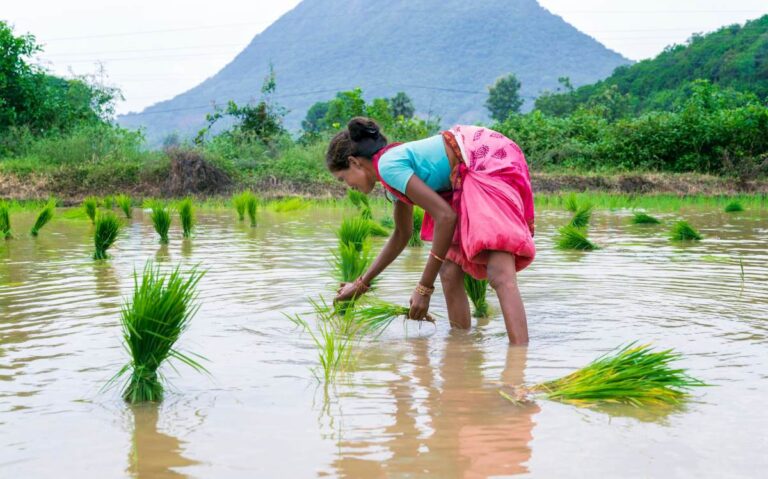Fixing climate change is no small task — just ask carbon removal developers like Mitti Labs.
The New York-based startup has developed technology to measure how much methane is released by rice paddies, and then it helps train hundreds of thousands of farmers in climate-friendly practices. It’s the sort of high-touch endeavor that venture capitalists typically avoid.
So how has Mitti managed to raise funding from its investors? In short: partnerships.
Mitti has started working with The Nature Conservancy on a partnership to promote regenerative, no-burn agriculture, the startup exclusively told TechCrunch, the latest in a string of deals that extend its reach. Mitti will use its AI-powered models to measure, report, and verify the work done by the nonprofit’s workers on the ground in India, where they’re helping farmers implement a swath of climate-friendly practices.
“Most of the project operations on the ground are from locals from the villages where these projects are being implemented,” co-founder Xavier Laguarta told TechCrunch.
While Mitti’s main operations currently focus on developing projects that reduce the amount of methane generated by rice farming, the company is working to offer more software features to third parties, he said.
“We can measure Scope 3 emissions from other project developers or corporations that are working with rice farmers,” Laguarta said, referring to emissions that an organization does not directly control. “Anyone who’s already running projects on the ground, that’s sort of like a SaaS solution that we can offer them.”
Mitti isn’t alone in chasing the SaaS-partnership angle. Mati Carbon, which recently won the Xprize Carbon grand prize, develops measurement, reporting, and verification software for enhanced rock weathering, in which minerals spread on farm fields both remove carbon and fertilize the soil.
Methane reduction projects generate carbon credits, which Mitti tracks using its software. The company takes a percentage of the credits’ sale and passes the remainder on to farmers and the community, he said. “Usually, farmers will see about a 15% improvement in their bottom line by joining our programs.” For smallholder farmers, who often teeter on the edge of profitability, such revenue can be meaningful.
Mitti’s software studies various signals from rice farms to determine how much methane they release throughout the growing season. Rice farming is distinct from many other types of agriculture because the fields are flooded for much of the year. This creates anaerobic, or oxygen-free conditions, in the soil, which foster the growth and metabolism of a suite of microbes that generate methane.
Methane is a powerful greenhouse gas, warming the planet 82 times more than the equivalent amount of carbon dioxide over a 20-year period. Rice farming is a large source of human-caused methane emissions, contributing around 10% to 12% of the total.
Mitti’s main data sources come from satellite imagery and radar, which can penetrate through clouds, plants, water, and the soil to determine what’s happening underground where the microbes live. It then feeds that information into AI models trained on satellite data and the results of extensive field studies.
Smallholders play a large role in agriculture in India; the average farm size is one hectare (about 2.5 acres). Monitoring each with physical equipment would be cost-prohibitive. The remotely sensed data helps keep verification costs reasonable, and the partnerships help bring climate-friendly practices to millions of farmers.
“Ninety percent of rice is grown in Asia, and outside of potentially China, the majority of rice growing regions have these similar smallholder farmer dynamics,” Laguarta said. “A deep partnership that we have with the Nature Conservancy allows us to develop these tools that can then be used for a lot of other programs in the region.”

